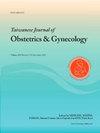褪黑素逆转双酚a诱导的颗粒细胞毒性:恢复FSHR和连接蛋白43的表达
IF 2
4区 医学
Q2 OBSTETRICS & GYNECOLOGY
引用次数: 0
摘要
目的双酚A (BPA)是一种类似雌激素的内分泌干扰化学物质,常见于各种日常消费品中。它通过干扰内分泌信号导致女性生殖障碍。正常的卵泡发生、卵母细胞成熟、排卵和黄体生长/复归依赖于颗粒细胞(GCs)和卵母细胞之间的间隙连接细胞间通讯。Connexin 43 (Cx43)是GCs中一个关键的间隙连接蛋白。Cx43在GCs中的表达受促卵泡激素(FSH)在卵泡发生的各个阶段的调节。褪黑素主要由松果体和生殖细胞(包括GCs)释放,具有抗炎和抗氧化作用。在这项研究中。我们研究了褪黑素对bpa诱导的GCs毒性的保护作用。材料与方法体外受精患者经控制性卵巢刺激后采集GCs。为了研究褪黑素对BPA诱导的GCs毒性的影响,我们评估了褪黑素和BPA处理的GCs的生物活性、基因表达和蛋白质表达。结果bpa可下调FSH受体(FSHR)的表达,抑制FSH诱导的GCs中Cx43的表达。它还降低了GCs中FSHR+Cx43+细胞群的比例(10.2% - 6.3%)。在bpa处理的GCs中,褪黑素处理逆转了bpa诱导的FSHR表达下调,恢复了fsh诱导的Cx43表达,fsh增加了GCs中FSHR+Cx43+细胞群的比例(8.6% - 21.3%)。结论近年来的临床试验表明,褪黑素可以有效预防细胞损伤,但也可能影响生殖疾病和妊娠结局。我们的研究结果阐明了bpa诱导GCs毒性的机制。褪黑素可能减轻BPA对女性生殖功能的不良影响,这对探索生殖疾病预防和治疗的新靶点很有意义。本文章由计算机程序翻译,如有差异,请以英文原文为准。
Melatonin reverses bisphenol A-induced toxicity in granulosa cells: Restoration of FSHR and connexin 43 expression
Objective
Bisphenol A (BPA) is an estrogen-like endocrine-disrupting chemical commonly found in various daily consumer products. It causes female reproductive disorders by interfering with endocrine signaling. Normal folliculogenesis, oocyte maturation, ovulation, and luteal growth/involution rely on the gap junctional intercellular communication between granulosa cells (GCs) and oocytes. Connexin 43 (Cx43) is a key gap junction protein in GCs. The expression of Cx43 in GCs is regulated by follicle-stimulating hormone (FSH) at every stage of folliculogenesis. Melatonin, which exerts anti-inflammatory and antioxidative effects, is primarily released by the pineal gland and reproductive cells, including GCs. In this study. We investigated the protective role of melatonin against BPA-induced toxicity in GCs.
Materials and methods
After controlled ovarian stimulation, GCs were collected from patients undergoing in vitro fertilization. To investigate the effect of melatonin on BPA-induced toxicity in GCs, we evaluated biological activity, gene expression, and protein expression in GCs treated with melatonin and BPA.
Results
BPA downregulated the expression of FSH receptor (FSHR) and inhibited the FSH-induced expression of Cx43 in GCs. It also reduced the proportion of FSHR+Cx43+ cells population in GCs (10.2 %–6.3 %). Melatonin treatment in BPA-treated GCs reversed the BPA-induced downregulation of FSHR expression, restored the FSH-induced expression of Cx43, and the proportion of FSH-increased FSHR+Cx43+ cells population in GCs (8.6 %–21.3 %).
Conclusion
Clinical trials in recent years have shown that melatonin could effectively prevent cell damage, and could also affect reproductive diseases and pregnancy outcomes. Our results elucidated the mechanisms underlying BPA-induced toxicity in GCs. Melatonin may mitigate the adverse effects of BPA on female reproductive function, which are interesting for exploring new targets in the prevention and treatment of reproductive diseases.
求助全文
通过发布文献求助,成功后即可免费获取论文全文。
去求助
来源期刊

Taiwanese Journal of Obstetrics & Gynecology
OBSTETRICS & GYNECOLOGY-
CiteScore
3.60
自引率
23.80%
发文量
207
审稿时长
4-8 weeks
期刊介绍:
Taiwanese Journal of Obstetrics and Gynecology is a peer-reviewed journal and open access publishing editorials, reviews, original articles, short communications, case reports, research letters, correspondence and letters to the editor in the field of obstetrics and gynecology.
The aims of the journal are to:
1.Publish cutting-edge, innovative and topical research that addresses screening, diagnosis, management and care in women''s health
2.Deliver evidence-based information
3.Promote the sharing of clinical experience
4.Address women-related health promotion
The journal provides comprehensive coverage of topics in obstetrics & gynecology and women''s health including maternal-fetal medicine, reproductive endocrinology/infertility, and gynecologic oncology. Taiwan Association of Obstetrics and Gynecology.
 求助内容:
求助内容: 应助结果提醒方式:
应助结果提醒方式:


